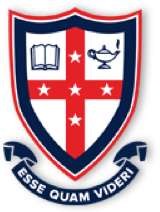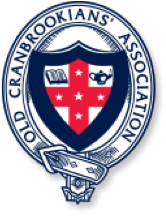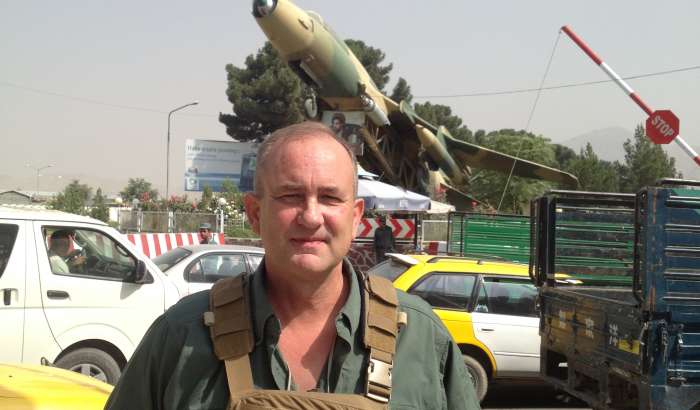George "Slam" Amland (OC 1975), Distinguished Marine
This extended interview was conducted by Lyndon Goddard (OC 2007) for the Old Cranbrookians' Association and first appeared in the OCA Newsletter, May 2015.
Colonel George “Slam” Amland recently retired from the United States Marine Corps after a distinguished thirty-year career. A fighter pilot by trade, he was deployed in support of Operation Desert Shield / Operation Desert Storm in 1990 and was deployed in the western Pacific during the 1990s. Later that decade, he served in the Pentagon for two years before serving in Iraq and Afghanistan during the 2000s. He retired from the US Department of Defense in mid-2014 after over 33 years of service.
What attracted you to the armed forces in the first place, and into service as a fighter pilot in particular? Were any experiences that you had at Cranbrook foundational in that regard?
I was not so much interested in the armed forces as I was uninterested in the offerings of a life in business. I started a job in accounting and found it dreadfully boring: I needed more of an adventure out of life. Cranbrook and life in Australia started me down a path of looking for opportunities that were out of the ordinary. I had established friendships within a wide diversity of contemporaries at Cranbrook from the NSW countryside to New Guinea and other countries. They shaped my future ideals and my outlook on life.
When I arrived back in the United States to attend university, I began to understand the breadth and depth of what I had been exposed to growing up in Sydney. I am privileged and grateful to have had the Cranbrook experience. I entered aviation training and discovered that I had an affinity for aviation and a talent for operating high performance aircraft. I never knew I had these attributes until I tried it.
Did you experience something of a culture shock when you commenced your aviator training? How did it compare to your expectations?
Culture shock is an understatement. Naval Aviator training was the most difficult experience of my life. The two and a half years of classes, study, simulators and daily flight evaluations was a grueling evolution towards becoming an entry level fleet aviator. The day that I was presented with my Naval Aviator wings was a day of extreme relief.
How did you obtain your “Slam” nickname?
As a young lieutenant, I was bringing a jet aboard the USS Constellation and it was experiencing some engine issues. The final landing was described, very kindly, as “abrupt”. Both the jet and I survived to fly another day. I have been called “Slam” ever since.
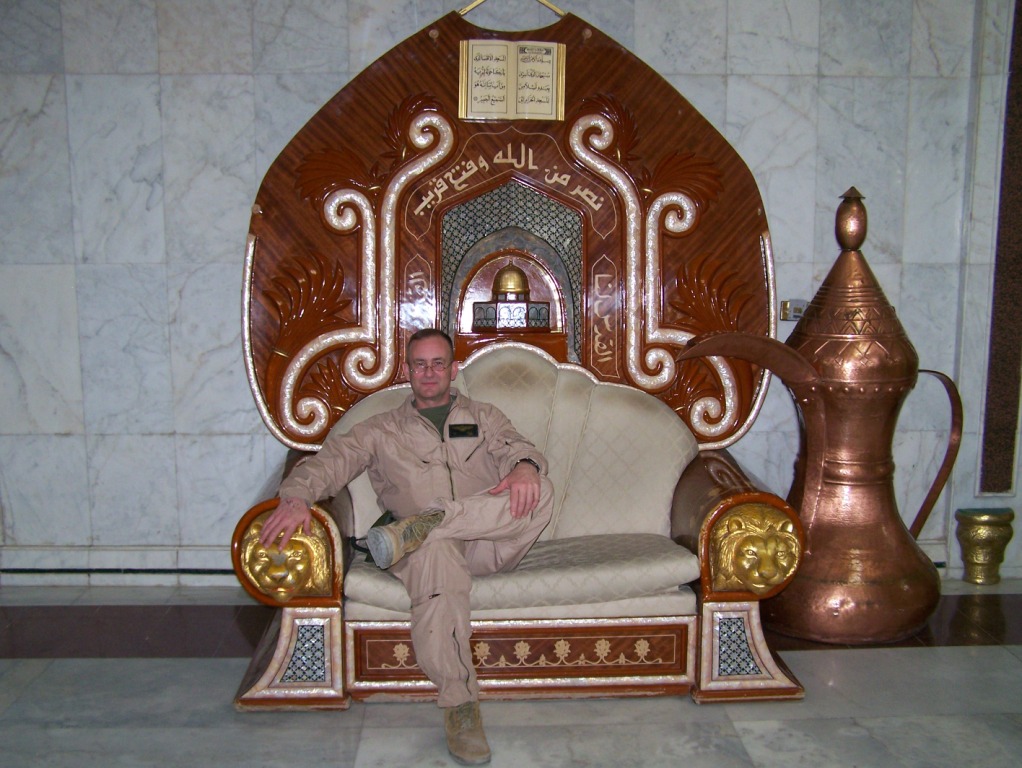
On the old throne of Saddam Hussein in al-Faw Palace, Baghdad, Iraq, in 2008.
When you were deployed in support of Operation Desert Shield / Operation Desert Storm as part of the Gulf War, how conscious were you of the politically charged environment at the time? How did you react to the experience of having fellow soldiers killed in action?
My squadron deployed very late in Desert Shield and we arrived in the Emirates about three weeks before the commencement of hostilities. Watching the media leading up to Desert Storm kept us tuned to the political environment. I was more concerned about the regional weather, geography, Iraqi order of battle and tactics at the time. For me, there was a mental turning point in the political arena when Syria and Egypt sided with the coalition.
The air battle in the first week was extremely energetic and generated losses on both sides that I witnessed personally. It left me with a very hollow, empty feeling, like there was a hole in my soul.
The Gulf War was notable also for the regular television broadcasting of the front lines of the battle to the general public in the US (and the rest of the world) – what was your involvement, if any, in that filming, and what were your impressions at the time about the effect that such broadcasting might have on public perceptions of war? Has your opinion changed since then?
I was forward deployed in Saudi Arabia after the second week and our connectivity to the outside world ended. I would read an issue of Stars and Stripes newspaper occasionally. The reality presented by the media did not relate well to my existence of sleep, mission preparation and survival.
Years later, I saw news videos of the early drama in Baghdad unfolding. It really was a very narrow snapshot of a much larger picture. It does little to convey the totality of the noise, the violence, the heat, the dirt, and the misery that is created by war. Unfortunately, that is all that is available for the public to digest and it leaves a much larger information void as the public is left to form its own opinion.
You had a somewhat exciting experience in 1991 when you had to race from Saudi Arabia to the US (via Germany) to witness the birth of your second child. Could you describe that race against time?
You must remember that at the time, there was no internet, no cell phones and very little means to communicate with the families at home. Regular mail had a 3-4 week turnaround and a lot can happen in that amount of time. I had news that my wife had relocated to her parents’ house in Florida and that was a signal that the time was approaching. That news was already a week old when it arrived, but it set in motion the mechanism for my release from Al Kharj Air Base in Saudi Arabia.
After a few days of waiting for a ride that never came, I was driven into Riyadh and deposited in a hangar to await another ride. It showed up after a day of waiting in sweltering heat and I headed off to Germany on the first leg and then into Philadelphia. I was rerouted commercially, weapons and all, through to Tallahassee, Florida where I rented a car and started driving to Fort Lauderdale.
On the way, I learned that my wife had begun labour. I started to rush and was stopped by the police on my way through Fort Lauderdale. Still dressed in the same flight suit, unshaven and covered in sweat and dust, the officer took pity on me and my story. He guided me to the hospital, which I otherwise never would have found, and an hour before my daughter was born, my wife saw my dirty flight boots under the screen in her room. She knew that I had made it.
What did your deployments to the western Pacific in the early 1990s involve?
My squadron deployments to the western Pacific involved flight operations in support of the Japanese Self-Defence Forces, ongoing defence of the South Korean peninsula, and theatre engagement with other countries in the area. I enjoyed two deployments to RAAF Darwin during this timeframe and I very much enjoyed the interaction with RAAF F-18 squadrons and other Australian Defence Force units. I especially enjoyed my trip down the Stuart Highway and all the NT parks.
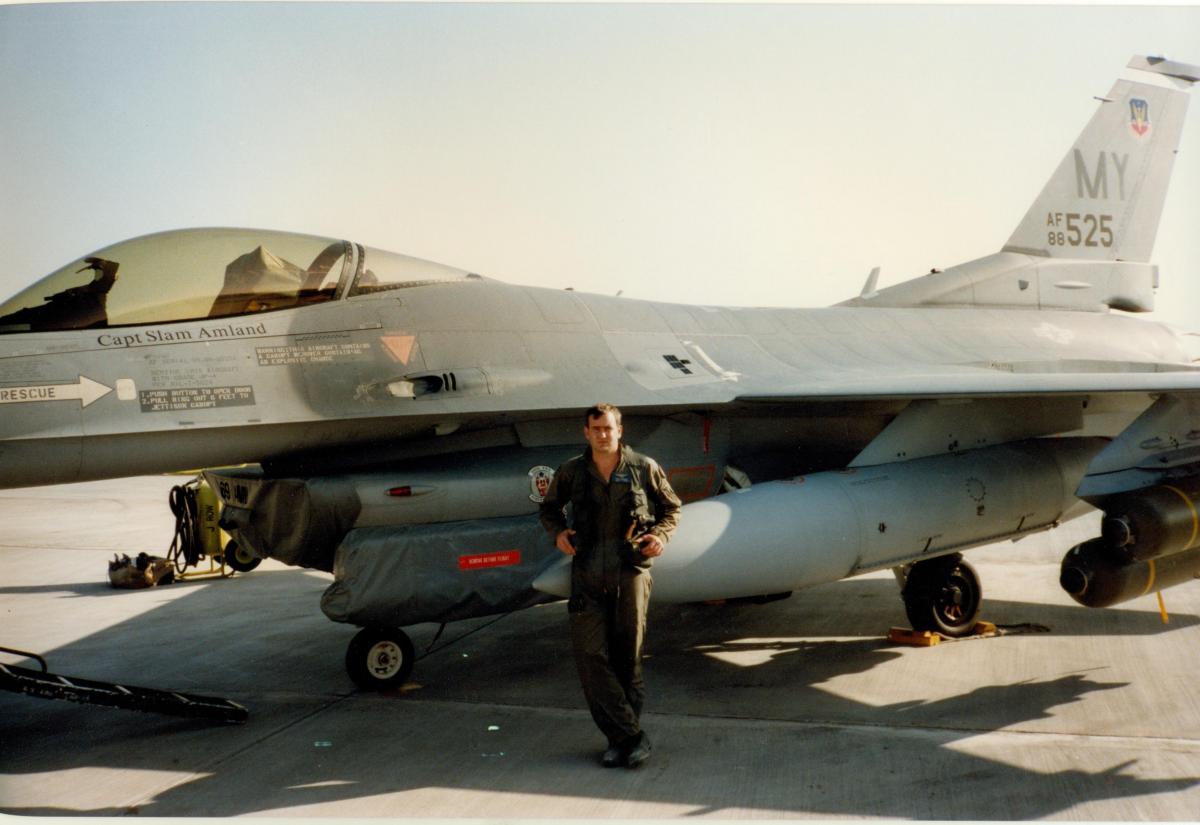
You moved away (temporarily) from a front-line role in the 1990s when you served in the Pentagon for two years. What did that role involve and how did you find the experience?
My “career broadening” tour in the Pentagon involved studying and advocating on behalf of the Marine Corps aviation manpower structure that included over a hundred occupational specialties and 30,000 personnel. Manpower structures are complicated and require constant attention to ensure that they are appropriately staffed. That was my task. Manpower in the armed forces reacts directly to influences in the national and global economy as the flows and rates of flow of talented and educated individuals adjust throughout the government and civilian sectors. It was a necessary evil to do a staff tour, but after 16 years in the field it made me increasingly restless.
From 2005 to 2008, you served in Iraq including 13 months of sustained combat operations, in a role that involved planning and oversight of over 200 strikes. Could you briefly describe the process that is undertaken to plan for such strikes? How was collateral damage sought to be minimized and what was the reaction when such damage was occasioned? What was the usual success rate of the strikes? How stressful did you find the process?
Strikes fell into two categories: support of troops-in-contact and deliberate strikes that afforded more time for planning. Responding to troops-in-contact required quick response times and did not always involve perfect information. You do the best you can with the reports available, imagery to evaluate the local environment and the selection of whatever fire support platform is available.
Deliberate strikes allow a more in-depth analysis of intelligence, imagery, pattern-of-life and selection of the weapon that will accomplish the task while reducing the likelihood of collateral damage to the greatest extent possible. We paid close attention to critical infrastructure and cultural/religious objects. There are electronic toolboxes that aid in this portion of the planning. There were occasions when strikes were terminated due to the collateral damage risks.
Regrettably, our opponent elected to conduct a lot of its operations inside densely populated metropolitan areas and collateral damage did occur. As much as practical, it was avoided. When it did occur, we went to extreme lengths to repair damage and restore any lost services. Compensation was made for civilian injuries that were sustained.
The process was incredibly stressful because you never knew when the requirement for a strike would come up. I was on call for strike planning around the clock.
In 2009, you were appointed as a Deputy Commander in Afghanistan. What was it like to work with the Afghan security forces? What were the biggest challenges you had to deal with as you faced the insurgents?
I enjoyed working with the Afghan Security Forces for the most part. I concluded early that they were the long term solution to their own security problems. Without them, there was no such thing as success. The Afghan National Army proved to be brave and able partners. The Afghan Police came in a variety of flavours and competencies; no two groups were the same. We had to wade through the issues of corruption, nepotism, tribal ethics and criminal activity. For the most part, they needed training, re-indoctrination into their duties and obligations, leadership and support when the chips were down. I enjoyed the personal relationships that I developed.
One of the biggest challenges was the job of identifying who the Taliban were. They mixed with the indigenous population and were very good at hiding in plain sight. There was a wide variety ranging from hard-core ideologues, to religious zealots, to day labour, to pure criminals who enjoyed the chaos and used it as their operating environment. There were plenty of “lunch bucket, five dollar a day” Taliban who did it because they wanted to make some money and didn’t have anything better to do. Sorting through all this was complicated by the fact that seasonally, all the players could turn into farmers or assume other more domestic roles. This made it a three dimensional chess game where the pieces could leap from one level to another.
You were in Afghanistan at the time that President Obama announced the troop surge in that country. How critical did you view that surge, at the time, to the success of the mission? Did you feel pressure to achieve an ultimate success as quickly as possible given the domestic political considerations (namely an increasingly war-weary public)?
The 2nd Marine Expeditionary Brigade was actually the leading edge of the surge and we established a footprint in a segment of Afghanistan that had not seen much ISAF [International Security Assistance Force] presence since forces were introduced into the country. Marines, in conjunction with Afghan National Army and a select few Afghan police, entered the Helmand River Valley in 2009 to stabilize an area that had become a rest and refit area and transit corridor for insurgents, as well as the source of over one half of the planet’s supply of raw opium products.
It was readily apparent that the Coalition footprint prior to the surge was wholly inadequate for the mission of re-establishing Afghan government authority throughout the country. The only way to wrest control away from the insurgents was to increase the ratio of ISAF troops first, and then to train a transition force of ISAF replacements from the Afghan Army and Police. This required time.
There was tremendous pressure to achieve success and our initial mandate was to pack up after a year of restoring the peace. As it turned out, the mission increased in size and continued on for an additional three years after we left. Insurgencies are not things that are solved in a day.
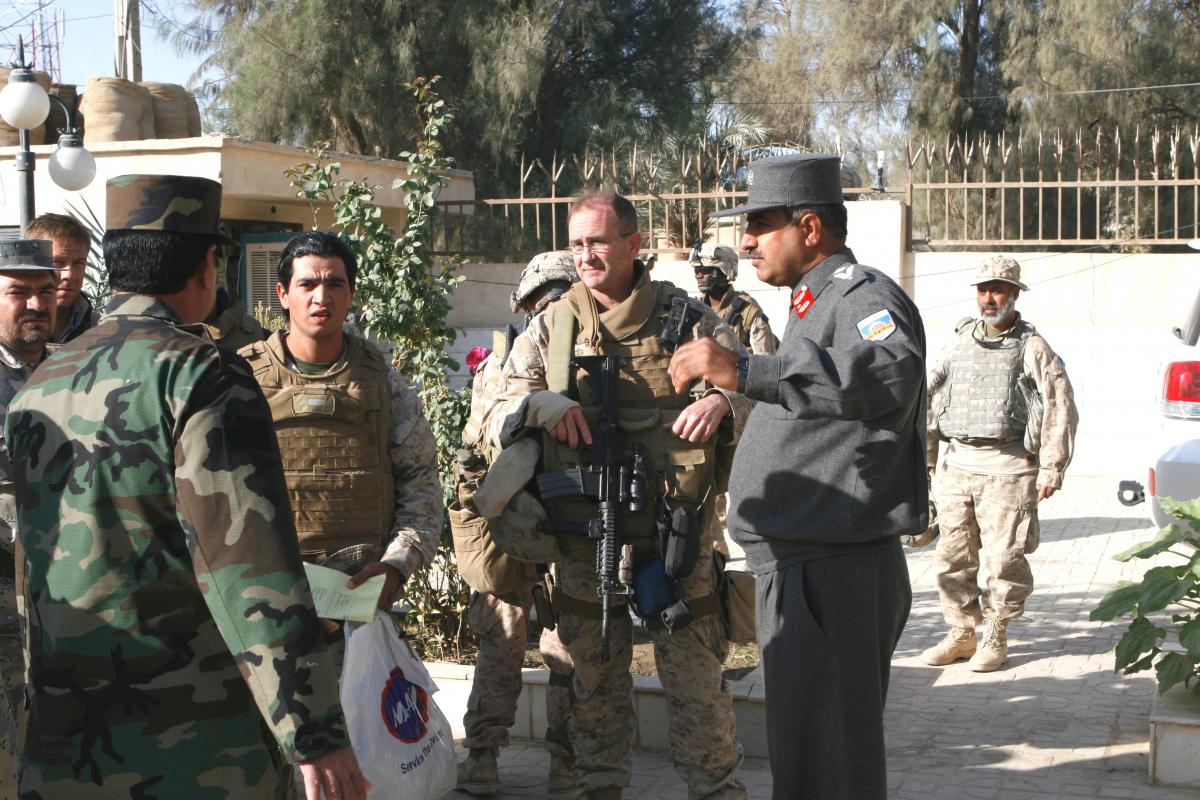
Overall, what were your most rewarding and most challenging experiences in the Marine Corps?
Restoring a community to a sense of normality is the most rewarding thing I achieved. Any fool can destroy things, but building things is a whole different matter. Counter-insurgencies are less about breaking china and more about building or restoring things. It takes energy, patience and time to restore essential services to a community. Sometimes it was a simple project like regenerating a source of potable water or clearing out a derelict irrigation system. Complex tasks involved rebuilding schools and community centers. Sometimes, it was as simple as restoring one’s trust in a fellow human being.
The most challenging experience was trying to balance a family life between the deployments and the long separations. It was one of the areas in which I believe my children paid the penalty. We keep working on it today.
What are your plans for retirement?
I have a few hobbies that I will now be able to pay more attention to. I am working on my kayaking instructor certification through the American Canoe Association. I am also volunteering in the Wounded Warrior Program and take time to provide kayaking support to those who are in need of that type of therapy. Twelve years of conflict in Iraq and Afghanistan produced a staggering number of casualties, both physical and emotional. I have felt a strong obligation to do what I can to help those in need. Any of those casualties could have been me.
What advice would you give to young people considering a career in the armed forces?
I had a command aboard Marine Corps Recruit Depot, Parris Island for a few years. There are three types of individuals who join the Marine Corps: those who need a way out of their current existence (eg, inner city strife or rural poverty); those who are searching for structure and a vocation to guide them through life; and those who have a higher calling in life and believe the armed forces is a way to achieve it. There is no wrong type, but it is helpful to do some soul searching to determine which type you are. You will not emerge from the experience the same person that went in. Above all, if you elect to “carry a gun for your country”, it is essential that you understand and respect the duties and obligations that come with it. It can be an extremely challenging and rewarding career.
